The Iconia Tab A700 is Acer's latest update to its Android tablet line-up. Featuring Android 4.0 Ice Cream Sandwich and a quad-core processor, the A700's claim to fame is its new 1920 x 1200 pixel, full HD display.
The Acer Iconia Tab A700 should look familiar to anyone who has seen or used a 10-inch Android tablet before. The standard slate design measures 259mm x 175.2mm x 10.9in (10.2in x 6.9in x 0.43in) and weighs 1.47lbs. The tablet's dimensions and 16:10 aspect ratio display lend it much more to use in landscape orientation than in portrait – something that is frequently said about 10-inch Android tablets.
The A700's 1920 x 1200 pixel display easily qualifies as full HD, offering a pixel density of 224PPI. While not quite as high as the Apple iPad's 264PPI, the A700's resolution is plenty dense enough for my eyes and it is a struggle to see any individual pixels. Needless to say, it's a considerable step up from the 1280 x 800 pixel displays Acer used on the A500 and A510.
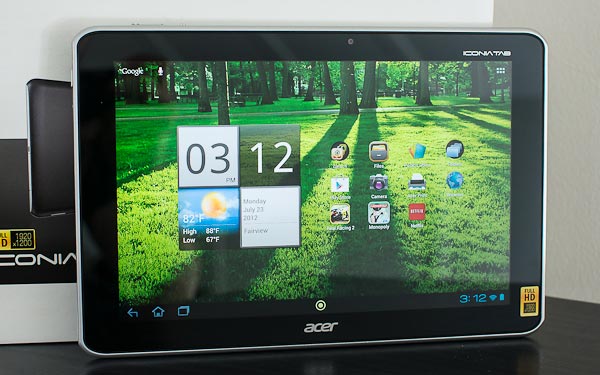
But as we have learned in the past, high resolution alone does not make a great display, and the A700's panel fails in a few key areas. The screen does not get nearly as bright as with other models, even when the setting is cranked all of the way up, and its viewing angles pale in comparison to what is offered by other competing tablets. On the plus side, colors are accurate and they are not oversaturated by any means.
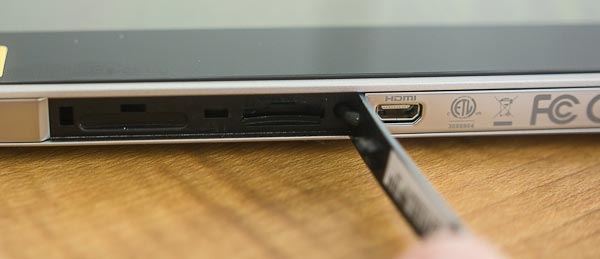
The right side of the tablet is home to a microSD card slot (under a plastic flap) and a micro-HDMI port. The power/sleep/unlock key and 3.5mm headphone jack are located along the left edge, while a volume rocker and orientation lock switch are found on the top edge of the tablet, in reach of your left index finger when you are holding the device in landscape orientation. The buttons and switches are solid and worked well during my testing, despite the fact that they are all made of plastic.
The micro-USB charging and syncing port, as well as a pair of speakers and a reset button, are located at the bottom of the A700. The speakers are branded with Dolby Digital Plus logos. I didn't hear any distortion when playing music through the speakers at full volume, though frankly they aren't all that impressive. The A700's volume is not as loud as other tablets and the placement of the speakers means that you will likely muffle them a bit when you are holding the tablet.
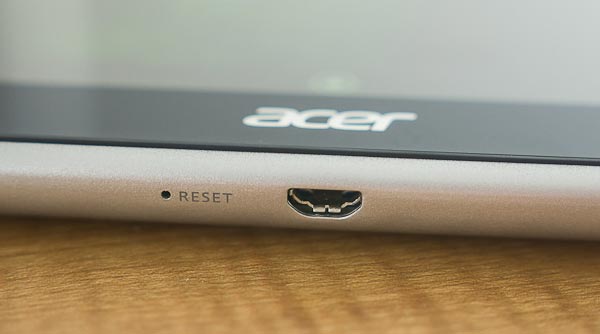
The back of the A700 features a plastic cover with a dimpled finish. The dimples aid in handling the tablet, but they don't go far enough to shake the cheap feeling it provides. The rear cover is easily flexed with just a little pressure and it definitely does not have the quality feel of the metal panels used on the iPad or Asus Transformer Pad Infinity 700. Centered on the back panel is a 5 megapixel autofocus camera with 1080p HD video capability. The A700 does not have an LED flash to aid in (or ruin, depending on your perspective) low-light photography. Under the rear cover is a 9800mAh battery that is not user accessible or serviceable.
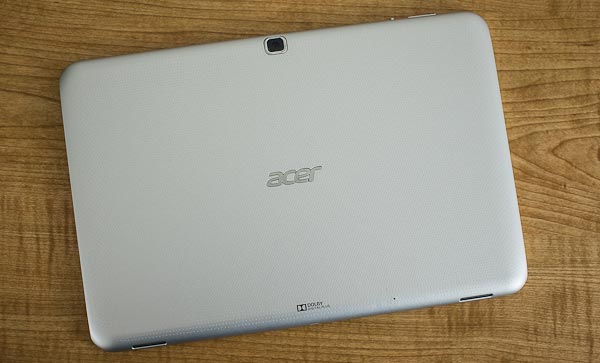
Overall, everything that has been said about 10-inch Android tablets since their inception can be applied to the A700: its dimensions make it difficult to hold with one hand and it's pretty cumbersome to use in portrait mode. The aspect ratio of the display does lend itself to watching widescreen, HD videos, but other than that I find tablets in the 10-inch size class with 4:3 aspect ratio displays to be more comfortable to use and handle.
The A700 is powered by Nvidia's quad-core Tegra 3 processor paired with 1GB of RAM. In this instance, it is clocked at 1.3GHz for each core, a notch slower than the 1.5GHz we've seen the Tegra 3 set to in other devices. This is unfortunate, because with its high-res display, the A700 could use all the computing power it could get. Normally, the Tegra 3 is a solid performer, but it seems to struggle in the A700.
Benchmark tests put the A700 a bit behind the best of the bunch of Android devices, and in real-world use, the tablet has noticeable stuttering and lag. Apps seems to open quickly enough, but when navigating the user interface, there are noticeable lags and delays that contribute to a feeling of frustration while using the tablet.
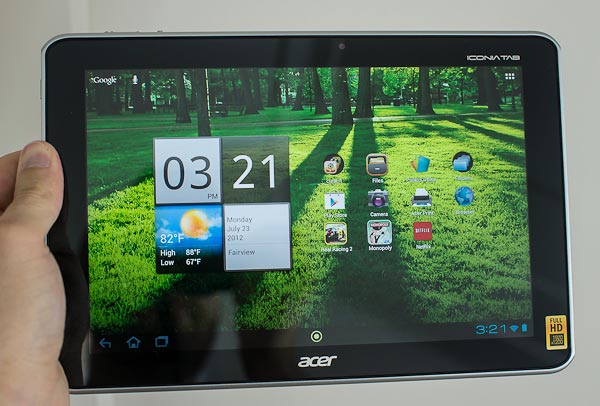
The A700's performance issues carry over to gaming, as well. Though the A700 has a 12-core graphics chip and access to a bevy of 3D games in Nvidia's Tegra Zone portal, the tablet struggled with the latest 3D games for the Android platform during my tests. Frame rates were noticeably lower than on other high-end Android devices, and it was difficult to play fast-paced games such as first person shooters.
The A700's higher resolution display most certainly contributed to its performance woes, but we have seen other tablets with high-res screens perform much better in the past. One other item of note: the A700 gets significantly warm on the right side whenever it is doing intensive tasks, like 3D gaming. It isn't enough to burn you, but it is definitely noticeable and may be uncomfortable for some users.
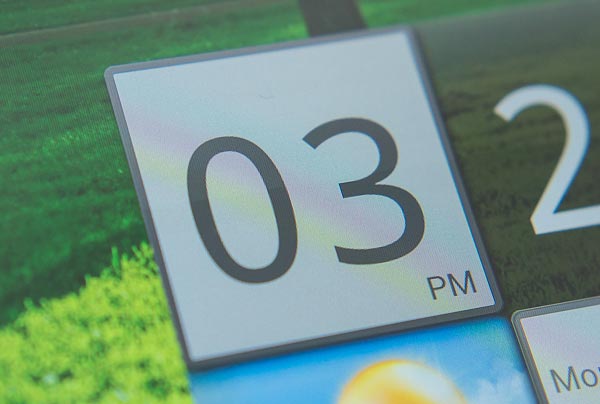
Acer has equipped the A700 with Android 4.0.4 and a few custom tweaks. The most significant customizations include a new lock screen with app shortcuts, quick toggles in the pop-up settings section of the taskbar, and the Acer Ring. The Ring is the company's utility that can be launched from within any app through a shortcut available in the middle of the task bar. It offers a volume control slider, customizable app shortcuts, and quick access to saved Bookmarks.
I like the concept of the Ring, but in use, I am not sure how practical it is. It tends to duplicate a lot of other easily accessible features available in Android 4.0, and it is also hampered by the A700's overall sluggishness as there is a noticeable pause between the time you press the button to launch the Ring and when it actually appears on screen. This is only exacerbated if you are within an app and decide to launch the Ring.
Other tweaks that Acer has added include custom widgets for time and weather, and apps for music playback and photo viewing that don't seem to do much more than duplicate Android 4.0's native functionality.

